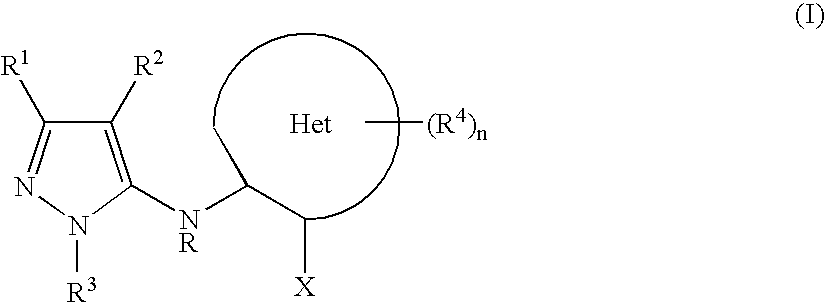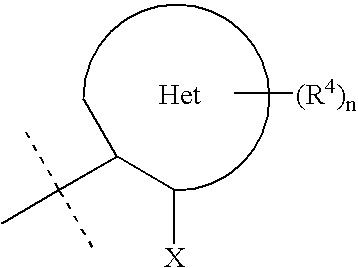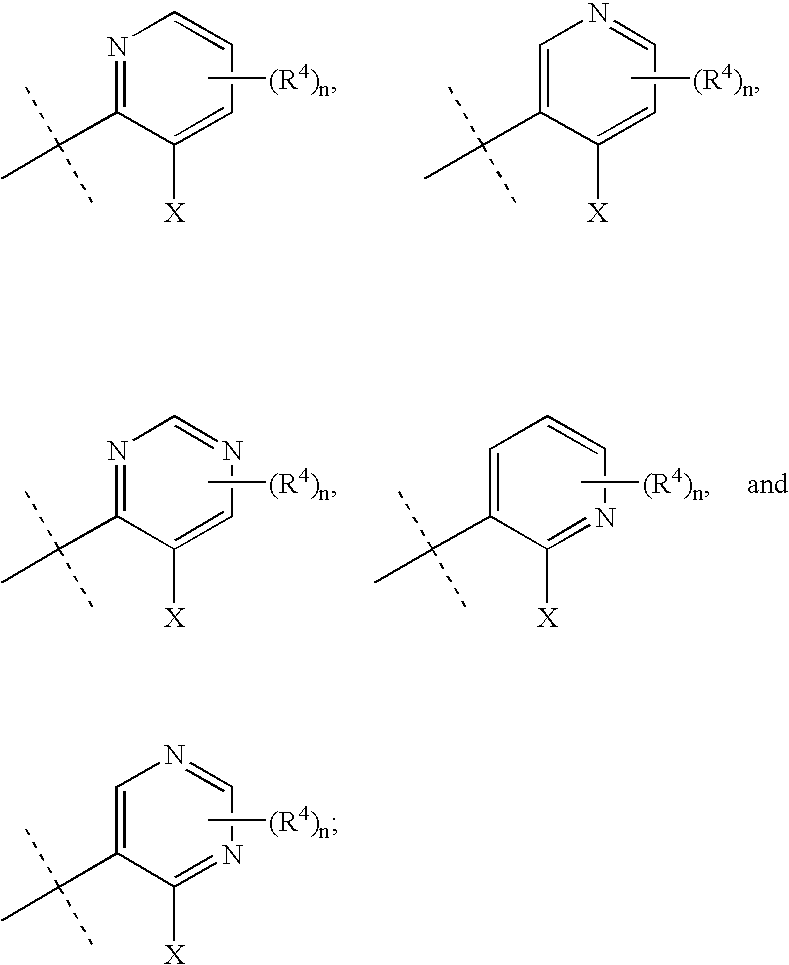Heteroarylaminopyrazole derivatives useful for the treatment of diabetes
a technology of heteroarylaminopyrazole and derivatives, which is applied in the field of heteroarylaminopyrazole compounds, can solve the problems of needing drug injection, weight gain, and potential hypoglycemia
- Summary
- Abstract
- Description
- Claims
- Application Information
AI Technical Summary
Benefits of technology
Problems solved by technology
Method used
Image
Examples
example 1
Preparation of 2-{[3-tert-butyl-1-(2-methylphenyl)-1 pyrazol-5-yl]amino}-6-methylnicotinic acid
A mixture of 2-chloro-6-methylnicotinic acid (122 mg, 0.71 mmol), potassium carbonate (108 mg, 0.78 mmol), 3-tert-butyl-1-(2-methylphenyl)-1H-pyrazol-5-amine (Intermediate F, 163 mg, 0.71 mmol), and copper (II) acetate (2.6 mg, 0.014 mmol) in DMF (2 mL) was heated (150° C.) in a sealed tube for 16 h. The mixture was cooled to rt, filtered through a silica gel plug using ethyl acetate as eluent, concentrated to dryness, and subjected to HPLC purification using a gradient elution from 30% to 90% acetonitrile in water. This afforded 182.2 mg (70%) of the desired product. 1H NMR (300 MHz, CD3OD) δ 8.14 (d, 1H), 7.14-7.51 (m, 4H), 7.01 (s, 1H), 6.80 (d, 1H), 2.53 (s, 3H), 2.10 (s, 3H), 1.40 (s, 9H); ES-MS m / z 365.3 (MH+); HPLC RT (min) 3.23.
By using the conditions described for Example 1 above, and by substituting the appropriate starting materials, Examples 11-75 and 147-150 were similarly...
example 2
Preparation of 2-{[3-cyclopentyl-1-(2-methylphenyl)-1H-pyrazol-5-yl]amino}nicotinic acid
A mixture of 2-chloronicotinic acid (113 mg, 0.72 mmol), potassium carbonate (199 mg, 1.44 mmol), 3-cyclopentyl-1-(2-methylphenyl)-1H-pyrazol-5-amine (174 mg, 0.72 mmol) (Intermediate E), and copper (II) acetate (6.5 mg, 0.04 mmol) in DMF (3 mL) was heated (150° C.) in a sealed tube for 16 h. The mixture was cooled to rt, filtered through a silica gel plug using ethyl acetate as eluent, concentrated to dryness, and subjected to HPLC purification using a gradient elution from 30% to 90% acetonitrile in water to afford 59.7 mg (23%) of the desired product.
1H NMR (300 MHz, CD2Cl2) δ 10.69 (s, 1H), 8.36 (dd, 1H), 8.16 (dd, 1H), 7.52 (d, 2H), 7.32-7.41 (m, 2H), 6.93 (dd, 1H), 6.82 (s, 1H), 3.11-3.22 (m, 1H), 2.19-2.21 (m, 2H), 1.94 (s, 3H), 1.65-1.89 (m, 6H); ES-MS m / z 363.2 (MH+), HPLC RT (min) 3.57.
example 3
Preparation of 3-{[1-(5-fluoro-2-methylphenyl)-3-methyl-4-phenyl-1H-pyrazol-5-yl]amino}isonicotinic acid
A mixture of 3-iodoisonicotinic acid (180 mg, 0.72 mmol), potassium carbonate (199 mg, 1.44 mmol), 1-(5-fluoro-2-methylphenyl)-3-methyl-4-phenyl-1H-pyrazol-5-amine (202 mg, 0.72 mmol, synthesized in the same manner as Intermediate F, using commercially available 2-phenylacetoacetonitrile as the nitrile source), and copper (II) acetate (6.5 mg, 0.04 mmol) in DMF (1 mL) was heated (150° C.) in a sealed tube for 16 h. The mixture was cooled to rt, filtered through a silica gel plug using ethyl acetate as eluent, concentrated to dryness, and subjected to HPLC purification using a gradient elution from 30% to 90% acetonitrile in water to afford 29.1 mg (10%) of the desired product. 1H NMR (300 MHz, CD3CN) δ 9.39 (br s, 1H), 7.93 (s, 1H), 7.86-7.90 (m, 2H), 7.05-7.45 (m, 8H), 2.38 (s, 3H), 2.15 (s, 3H); ES-MS m / z 403.1 (MH+), HPLC RT (min) 2.40.
PUM
| Property | Measurement | Unit |
|---|---|---|
| weight | aaaaa | aaaaa |
| concentrations | aaaaa | aaaaa |
Abstract
Description
Claims
Application Information
 Login to View More
Login to View More - R&D
- Intellectual Property
- Life Sciences
- Materials
- Tech Scout
- Unparalleled Data Quality
- Higher Quality Content
- 60% Fewer Hallucinations
Browse by: Latest US Patents, China's latest patents, Technical Efficacy Thesaurus, Application Domain, Technology Topic, Popular Technical Reports.
© 2025 PatSnap. All rights reserved.Legal|Privacy policy|Modern Slavery Act Transparency Statement|Sitemap|About US| Contact US: help@patsnap.com



